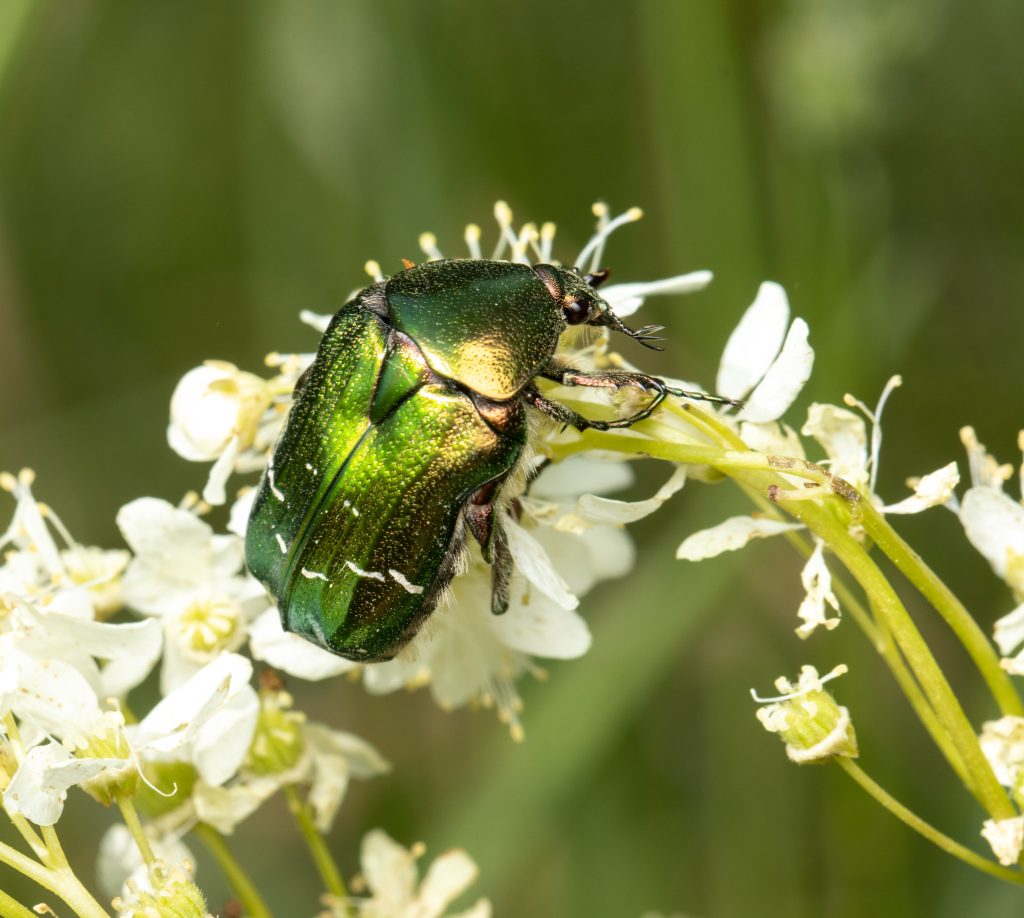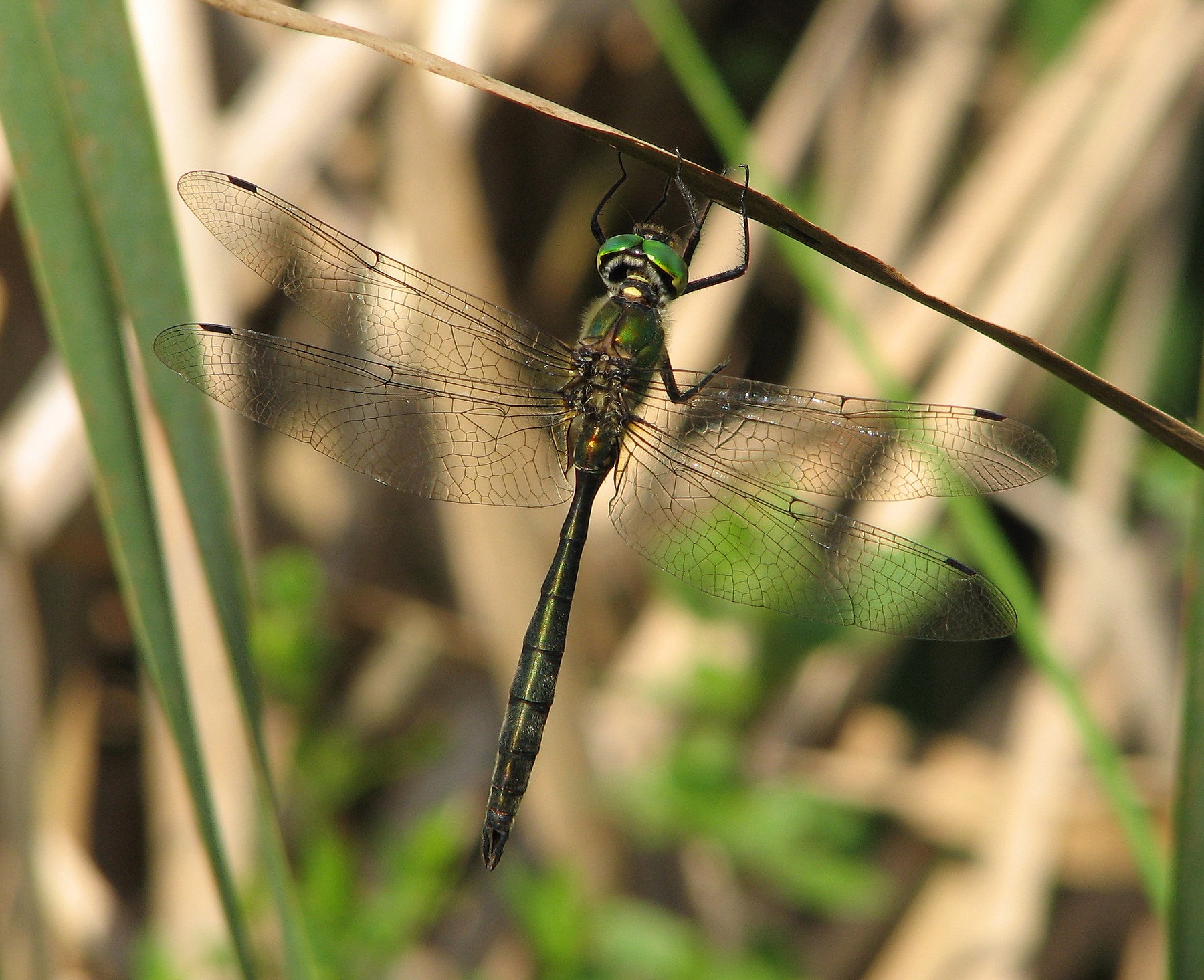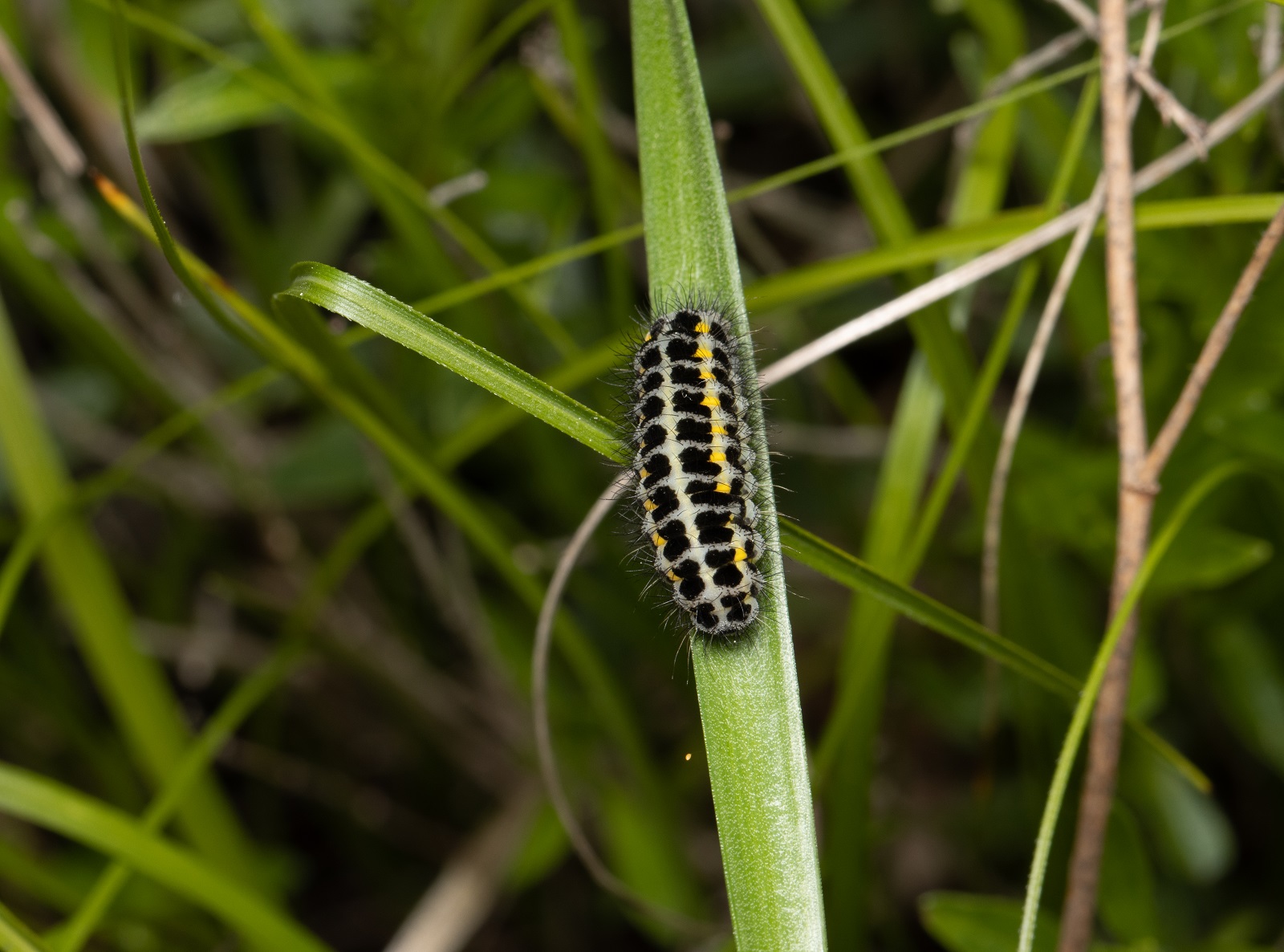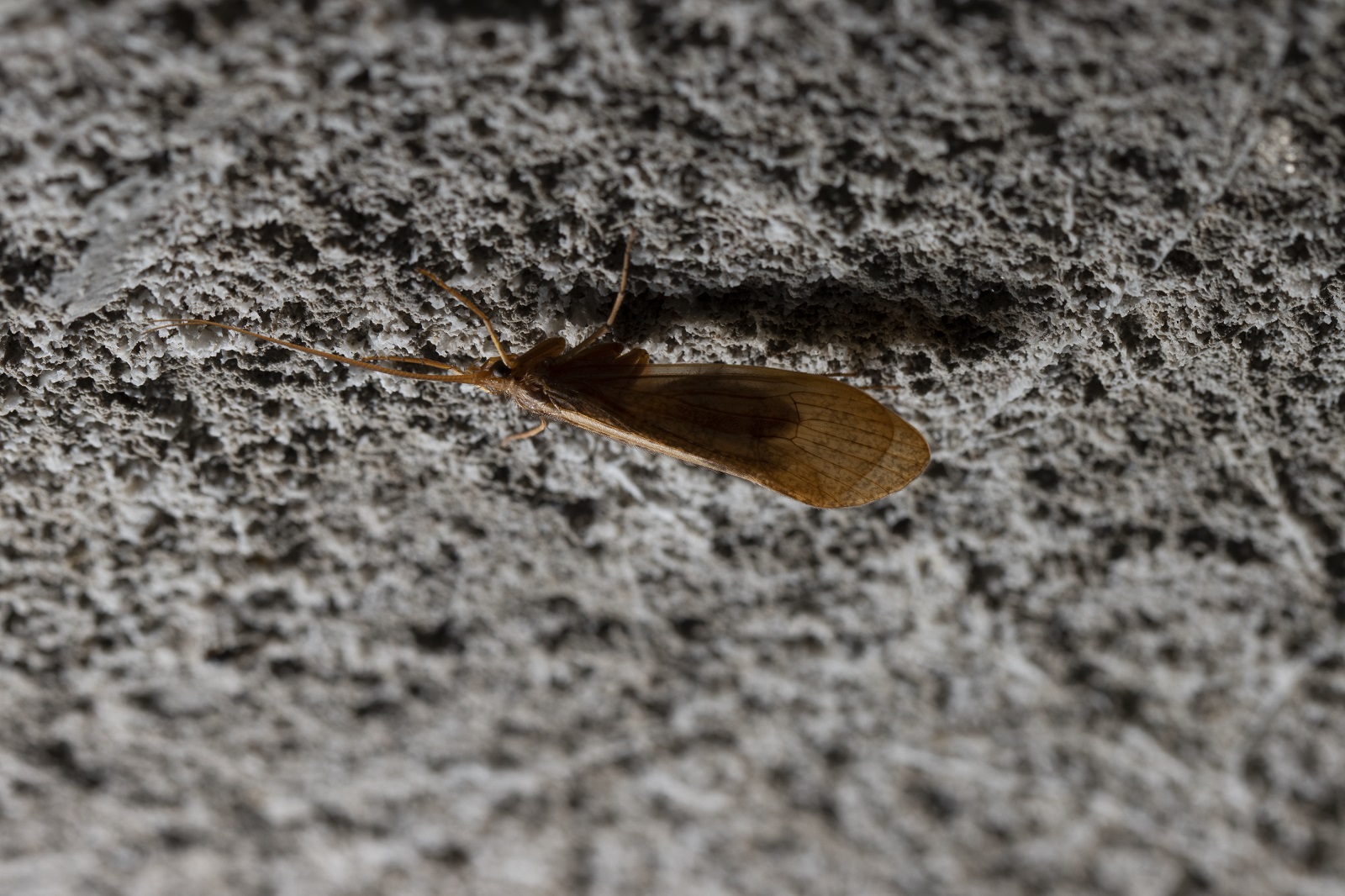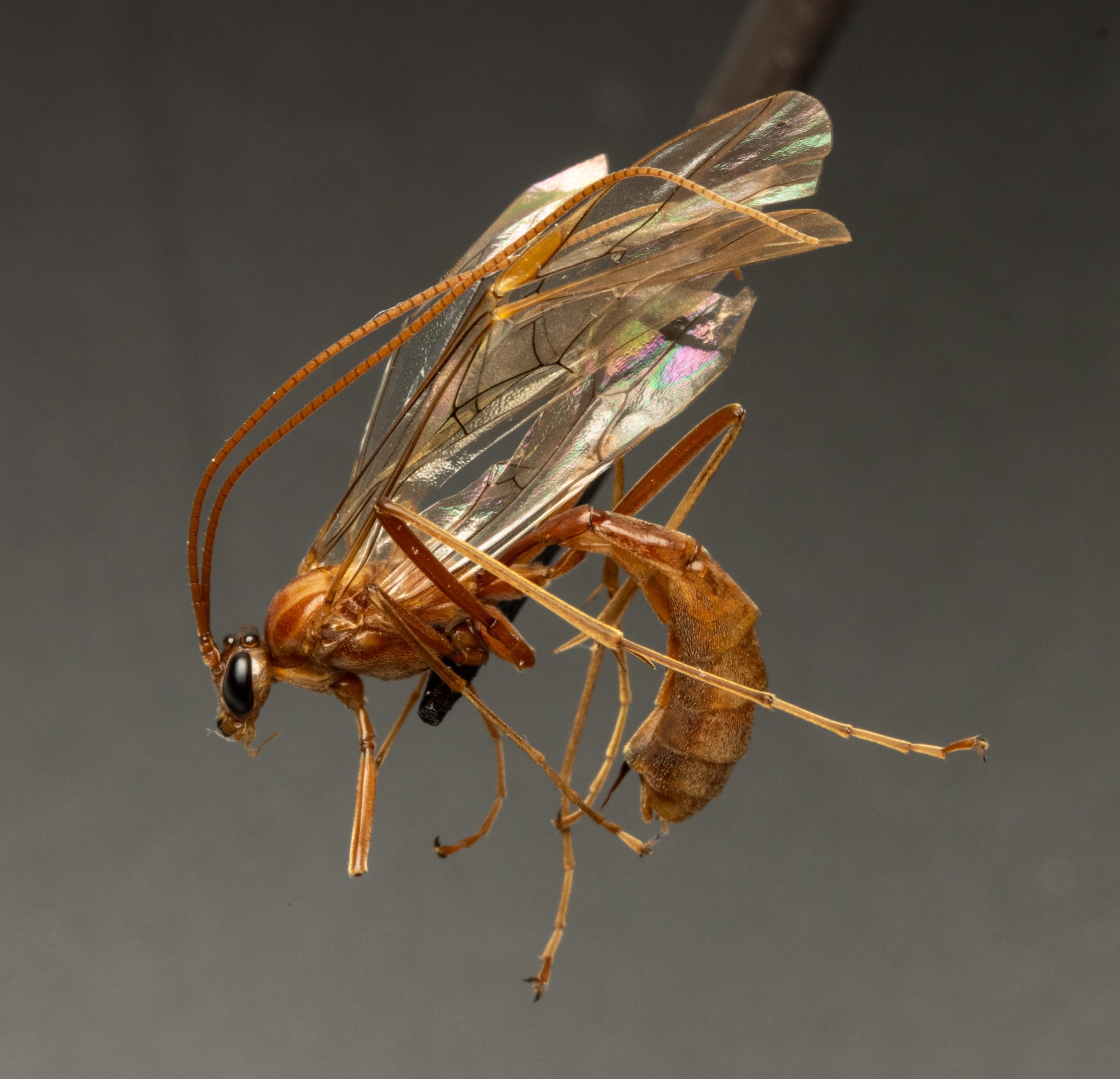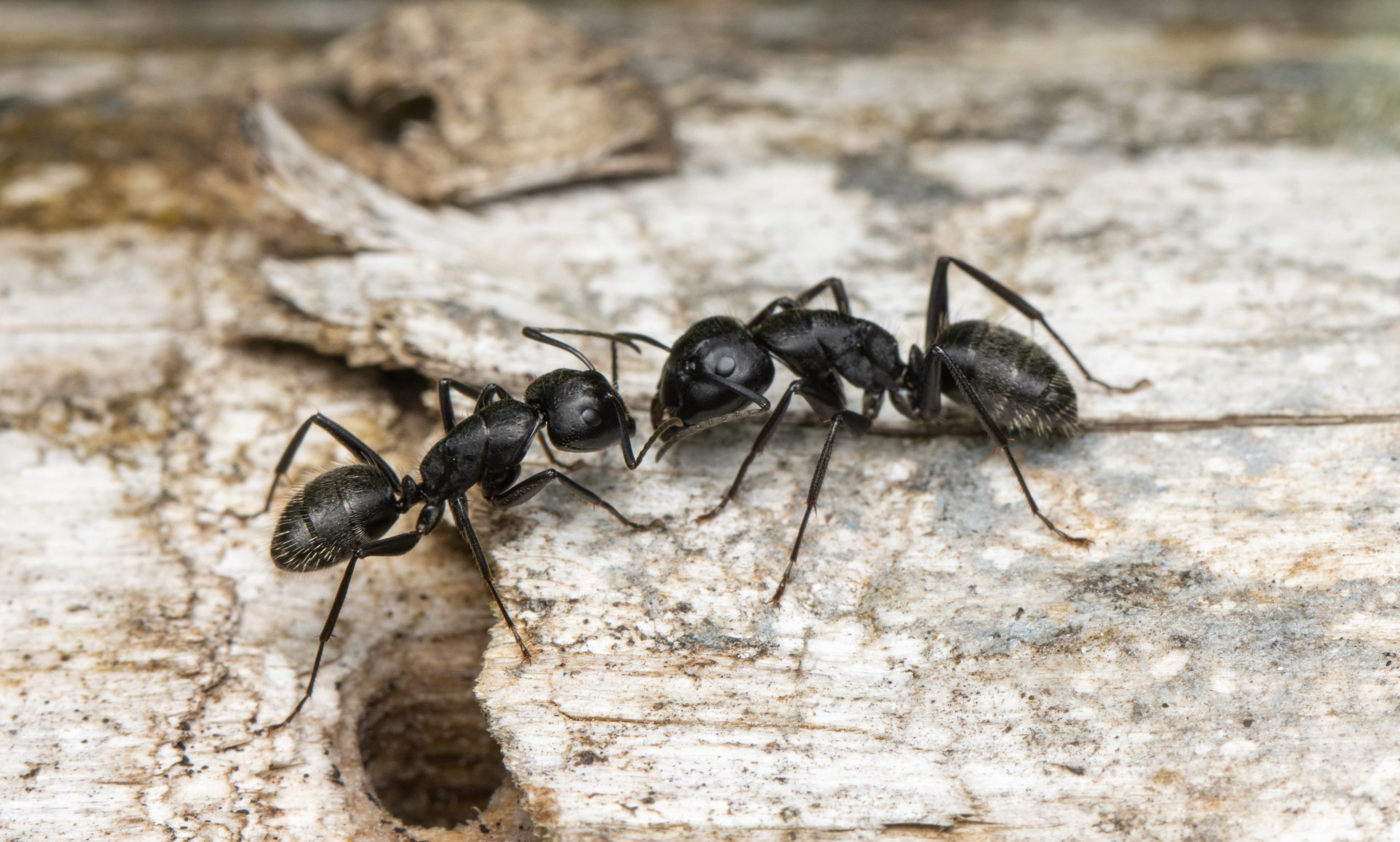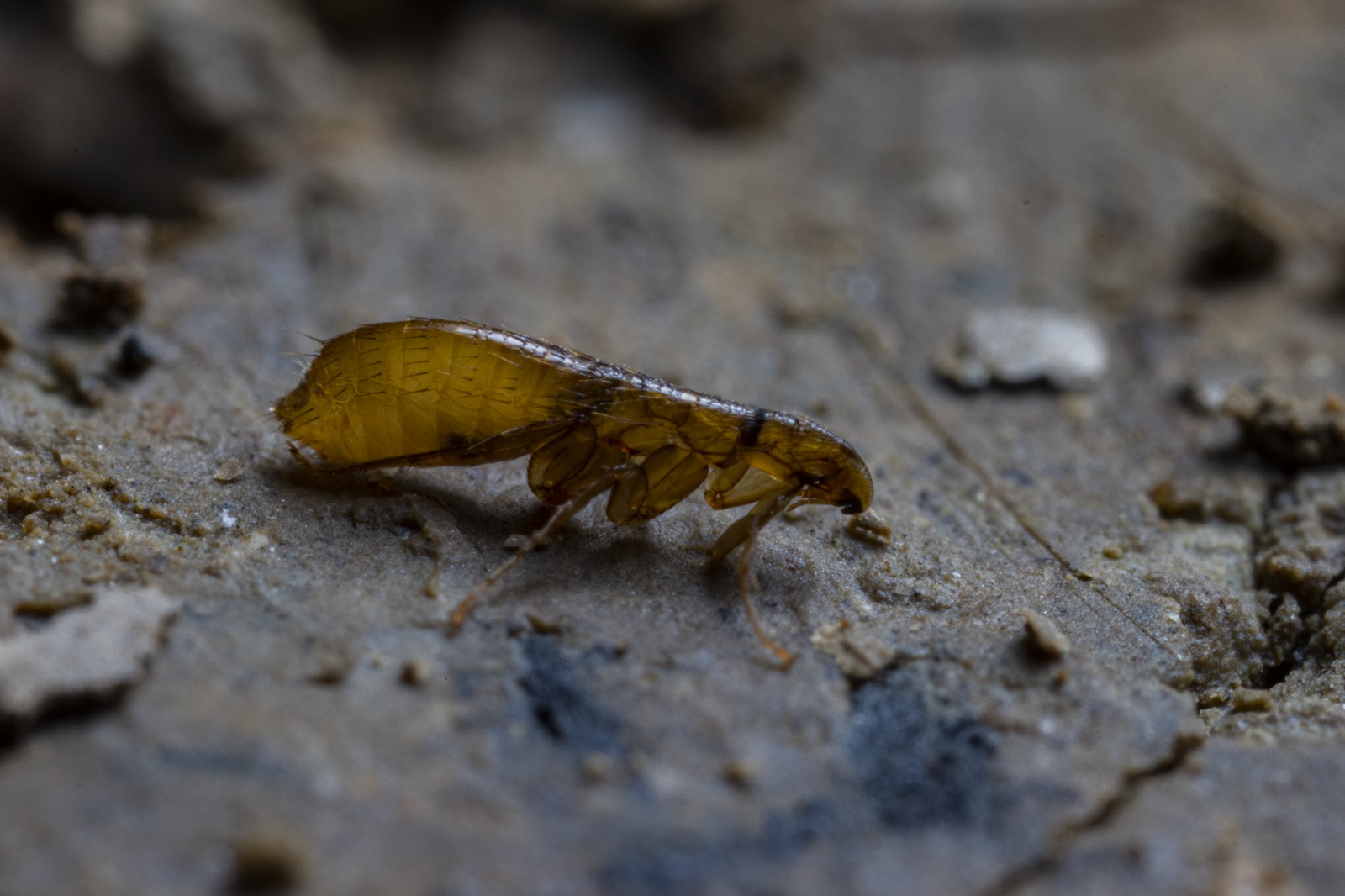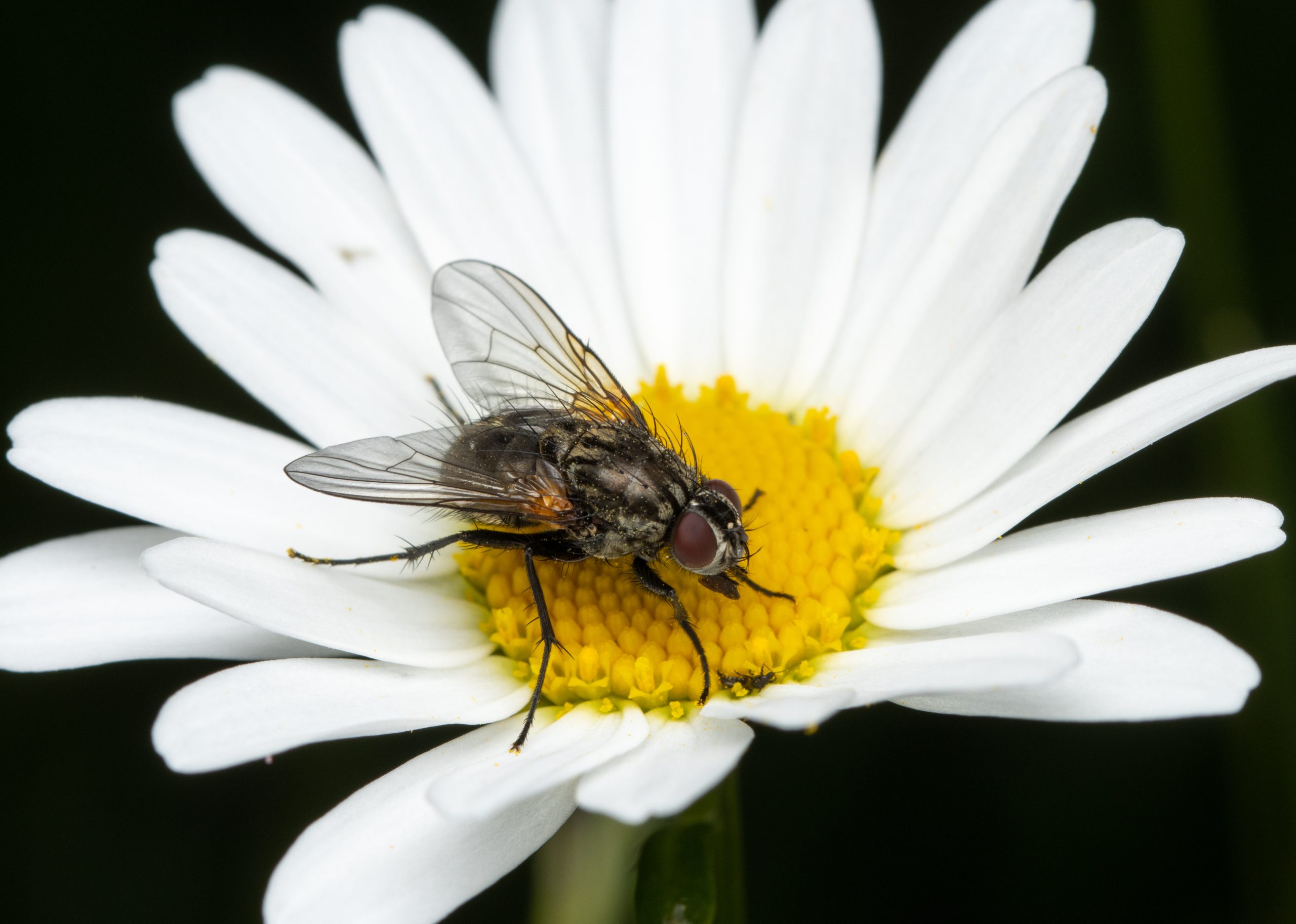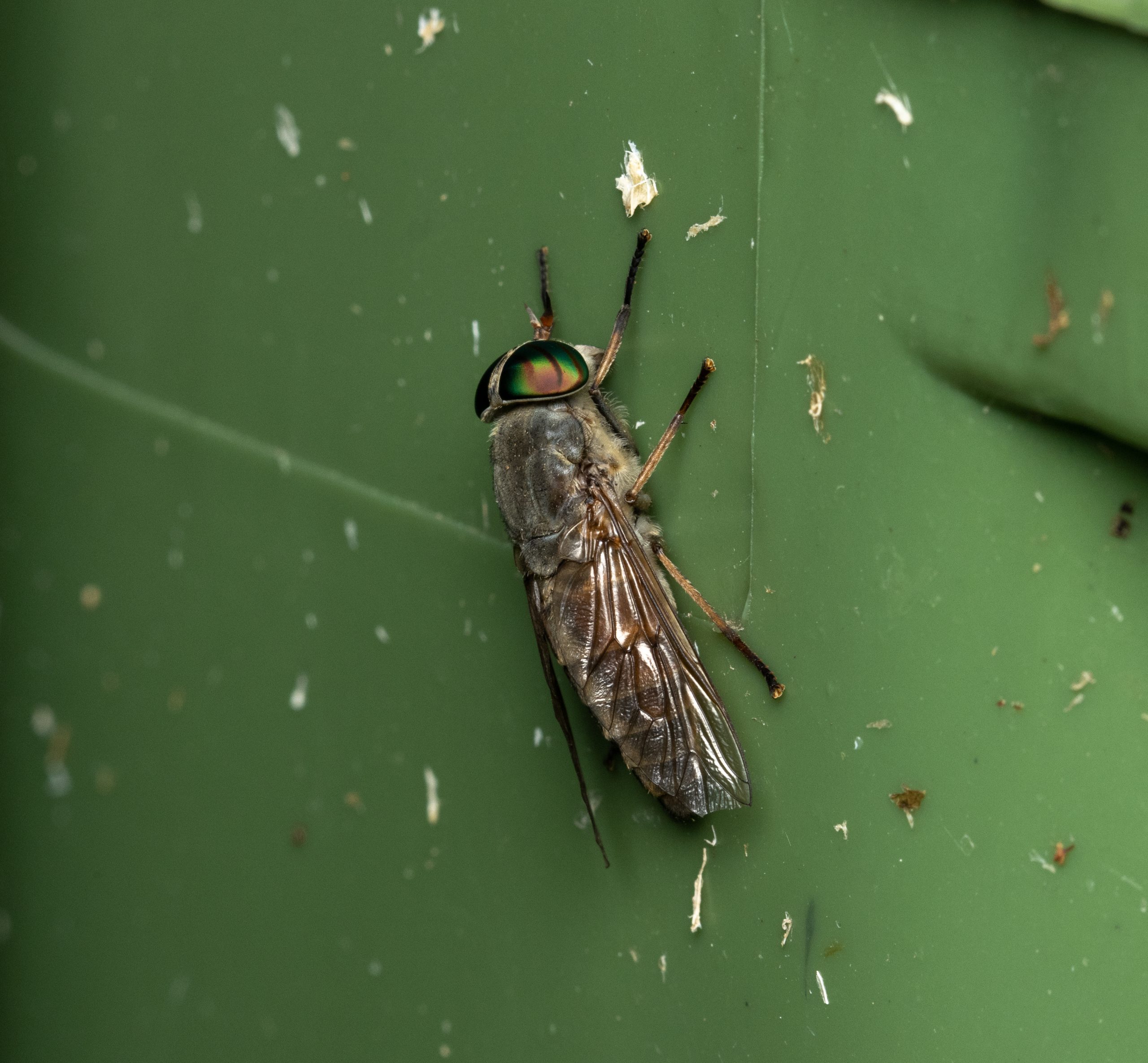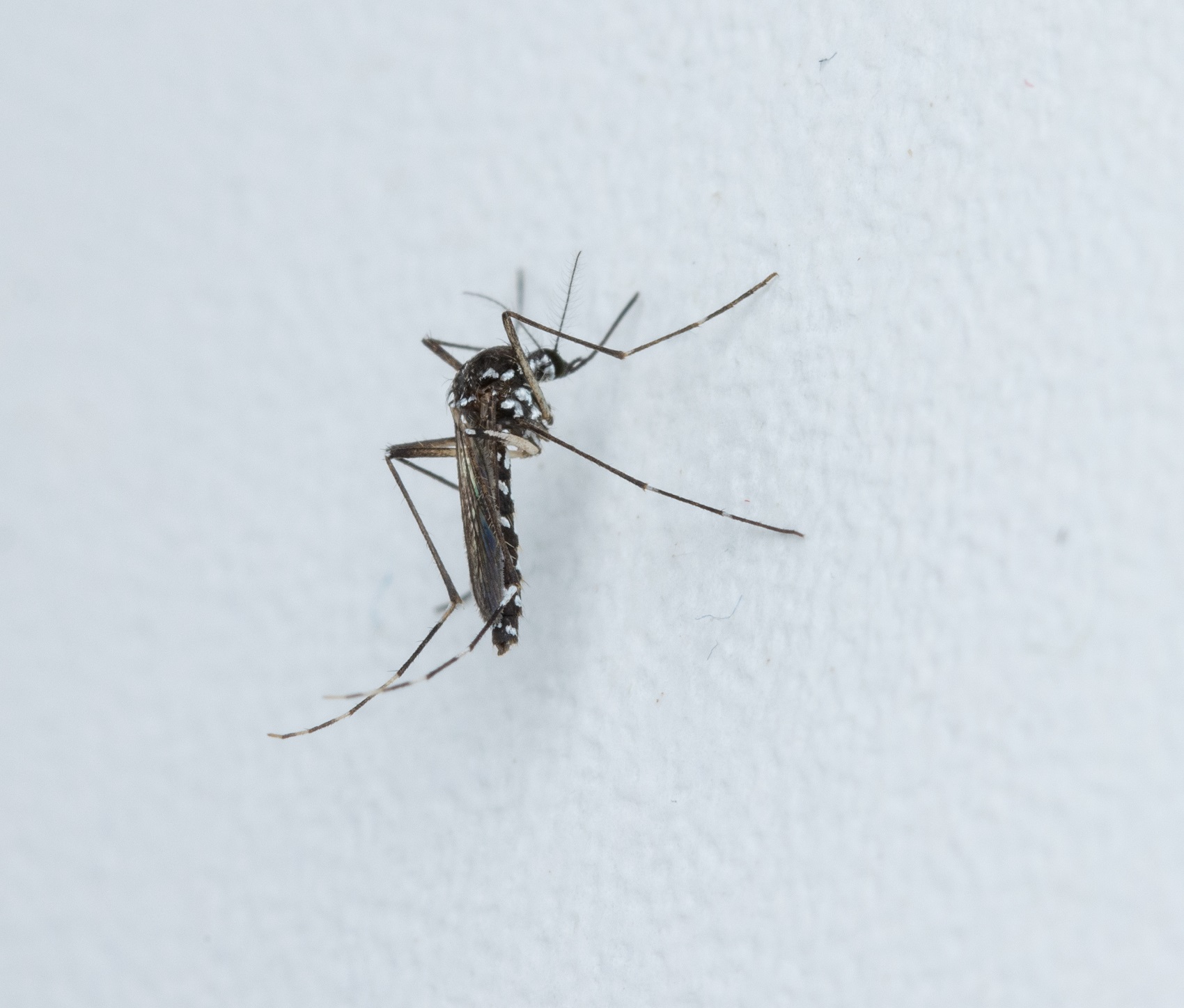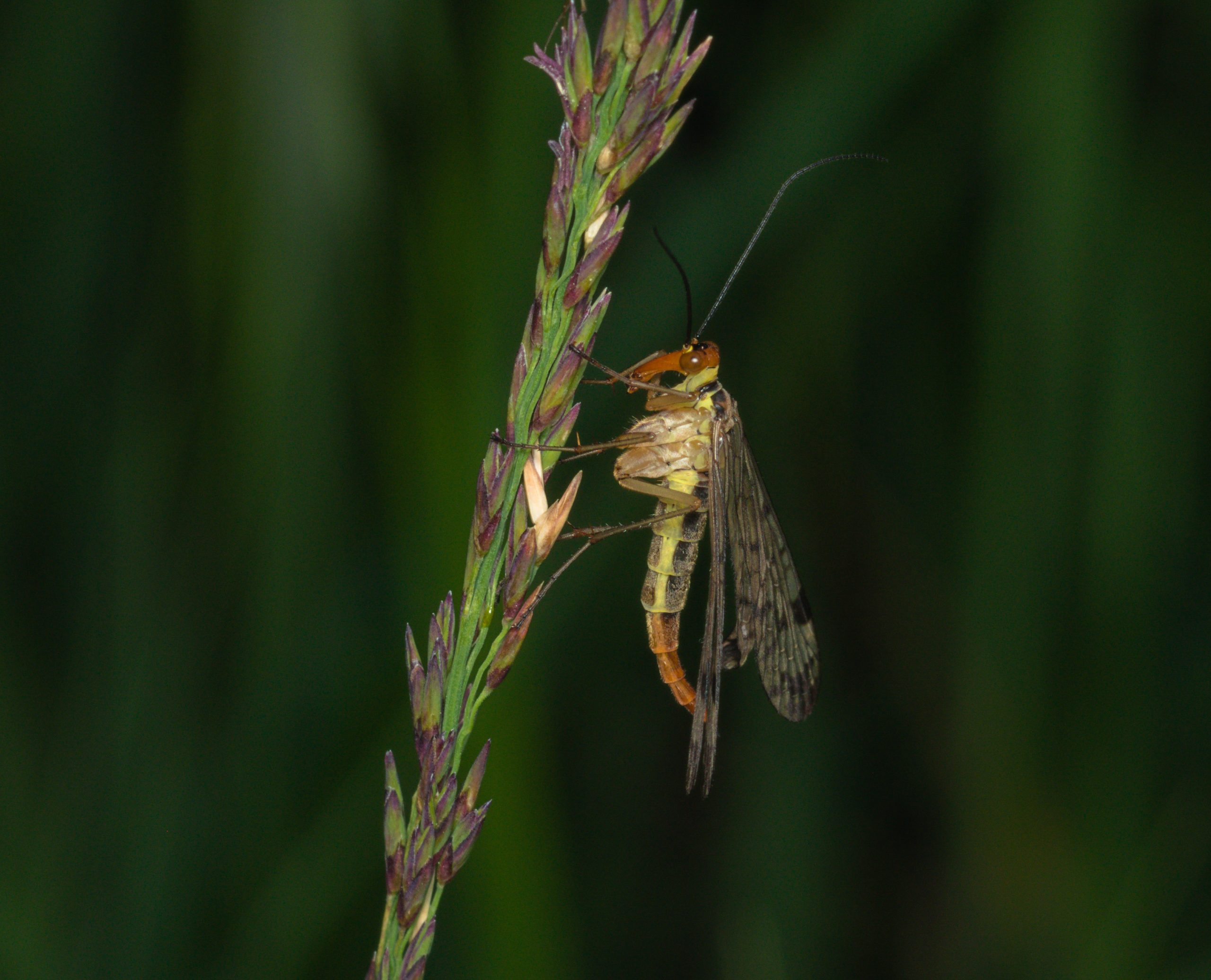- Insects
Cetonia
Rose chafers of the genus Cetonia are medium-sized beetles with an average length of about 2 cm with a broad, oval-shaped body. Their body and elytra, which are the hardened first pair of wings, are uniformly metallic green but can also appear in shades of brown, gold, or red. The elytra often have small bright spots. The metallic sheen is caused by microscopic surface structures that reflect light. The body consists of head, thorax and abdomen.
The head bears a pair of compound eyes and antennae that are fan-shaped, with three short lamellae at their tips.
Thorax consists of three segments. On the dorsal side of the second segment the elytra originate, which may be smooth or have longitudinal ridges. The scutellum (shield) in the shape of a V is clearly visible between the elytra. Each thoracic segment has a pair of legs which are somewhat flattened. The outer edges of the tibiae on the first leg pair have short spines. These beetles are good fliers and have a membranous second pair of wings on the third thoracic segment.
The dorsal side of abdomen is covered by the elytra. The abdomen has no appendages.
Rose chafers are distributed throughout Europe and as far as Central Asia, inhabiting open landscapes in zones of mixed and deciduous forests.
Their larvae primarily feed on decaying wood but can also be found in moist humus and compost. Their developmental cycle lasts one to two years. Adult beetles emerge from pupae in the soil in May and fly until September. They feed on flowers (pollen, nectar and petals), particularly on large flat flowers or inflorescences, such as those found in various members of the rose and carrot families. They, less commonly, feed by licking sap from damaged trunks and branches of deciduous trees.
More photos
More info
Related arthropods

Authors
- Urban Bogataj,
- Gregor Bračko,
- Teo Delič,
- Cene Fišer,
- Žiga Fišer,
- Rok Kostanjšek,
- Rudi Verovnik,
- Miloš Vittori,
- Valerija Zakšek.
Students Vito Ham, Vesna Jurjevič, Gaj Kušar, and Adrijan Samuel Stell Pičman also participated in the project.
